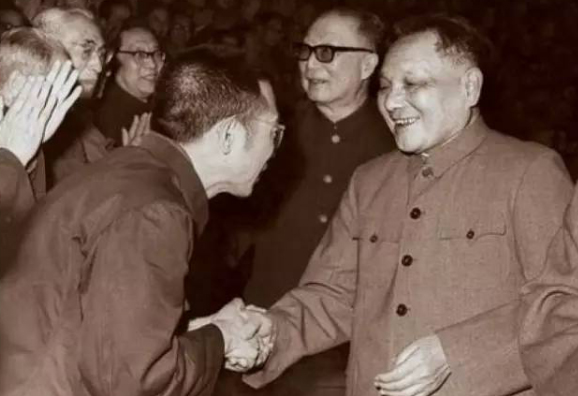1、 The early days of the founding of the Communist Party of China (1921-1949): the breeding of scientific and technological innovation ideas
In the early days of the founding of the Communist Party of China, the Chinese Communists, represented by Mao Zedong and others, have long formed their initial understanding of scientific and technological innovation. Although these ideas have not been systematized and systematized due to the limitations of the level of understanding and practical conditions, they have laid a solid ideological foundation for the Communist Party of China to lead the people to develop science and technology.
In 1921, Mao Zedong attended the regular meeting of the Xinmin Society held at the Cultural Press, and when talking about his plan, he said: "Because of the lack of knowledge of natural basic science such as mathematics, physics, chemistry, etc., he wanted to try to make up for it." After taking part in revolutionary work, Mao Zedong formed a scientific attitude of respecting science and talents, And vigorously support the cause of science and technology in revolutionary practice. Relying on the theory and practical exploration of early Communists, the Communist Party of China has initially formed the scientific and technological innovation thought based on historical materialism in the early days of its founding.
Subsequently, the Communist Party of China began to gradually apply the sinicized Marxist scientific and technological thought to revolutionary practice, and promoted the organizational, systematic and institutionalized development of science and technology in practice. During the period of the new democratic revolution, the anti Japanese base areas and liberated areas under the leadership of the Communist Party witnessed a prosperous scene of rapid development of science and technology.
2、 From the founding of New China to the eve of reform and opening up (1949-1978): scientific and technological innovation ideas serve the socialist construction
After the founding of New China, Mao Zedong pointed out that "now we are in a period of transformation: from class struggle to struggle against nature, from revolution to construction, from past revolution to technological revolution and cultural revolution."
The first generation of central leading collective formulated and released planning documents such as the Long term Plan for Science and Technology Development from 1956 to 1967 and the Outline of Science and Technology Plan from 1963 to 1972. The release and implementation of planning documents is a major strategic measure to promote China's scientific and technological innovation, which further improves the planning and pertinence of developing scientific and technological innovation.
In general, during this period, the Communist Party of China gradually formed the ability to integrate and allocate all kinds of resources and top-level design ability, and made great achievements in the development environment of poverty and poverty. Although it experienced some twists and turns in the 10-year "Cultural Revolution", it still laid a good material foundation, institutional foundation and valuable experience for the development of science and technology after the reform and opening up.
3、 Reform and Opening up to the 18th National Congress of the Communist Party of China (1978-2012): Exploring the Transformation of Science and Technology into Productivity in Reform
During this period, computer technology, atomic energy technology, aerospace technology and other fields developed rapidly and were directly integrated with production. Science and technology played an increasingly important role in promoting the development of productivity. In March 1978, the National Science Conference was held in Beijing, and more than 5500 representatives gathered together. China's science and technology industry ushered in the "spring of science".

Later, Deng Xiaoping also profoundly clarified the relationship between science and technology and education, promoted the reform of the education system, and formed the embryonic form of the strategy of "rejuvenating the country through science and education". Deng Xiaoping's scientific and technological thought, which is based on the assertion that "science and technology are the first productive forces", has promoted the systematization and theorization of the scientific and technological thought of the Communist Party of China and made great contributions to the socialist modernization.
At the 1995 National Science and Technology Conference, Jiang Zemin proposed to implement the strategy of rejuvenating the country through science and education. In the new century, the CPC Central Committee with Hu Jintao as the General Secretary took promoting independent innovation and building an innovative country as a major strategic decision to implement the Scientific Outlook on Development and promote socialist modernization.
4、 Since the 18th National Congress of the Communist Party of China (2012 to date): the road to scientific and technological power in the great rejuvenation
Since the 18th National Congress of the Communist Party of China (CPC), the CPC Central Committee with Comrade Xi Jinping at the core has led the country to comprehensively deepen the reform of the science and technology system, promote the modernization of the science and technology governance system and governance capability, stimulate innovative vitality with the reform of the system and mechanism, and lay the institutional foundation for the fundamental transformation of the driving force of development.
The Central Committee of the Communist Party of China, based on the unprecedented changes in a century, accurately grasped the trend of world scientific and technological innovation and pushed China's scientific and technological innovation into a new stage of development. In October 2020, the Fifth Plenary Session of the 19th Central Committee of the Communist Party of China summarized the past, planned and explored the future, and reviewed and passed the Proposal of the Central Committee of the Communist Party of China on Formulating the 14th Five Year Plan for National Economic and Social Development and the Vision of 2035 (the Proposal for short). Innovation is one of the core keywords throughout the full text of the Proposal, the first driving force to lead development, and an important focus to achieve socialist modernization. Looking forward to 2035, the Proposal highlights that the basic realization of socialist modernization should achieve "major breakthroughs in key core technologies and enter the forefront of innovative countries".

